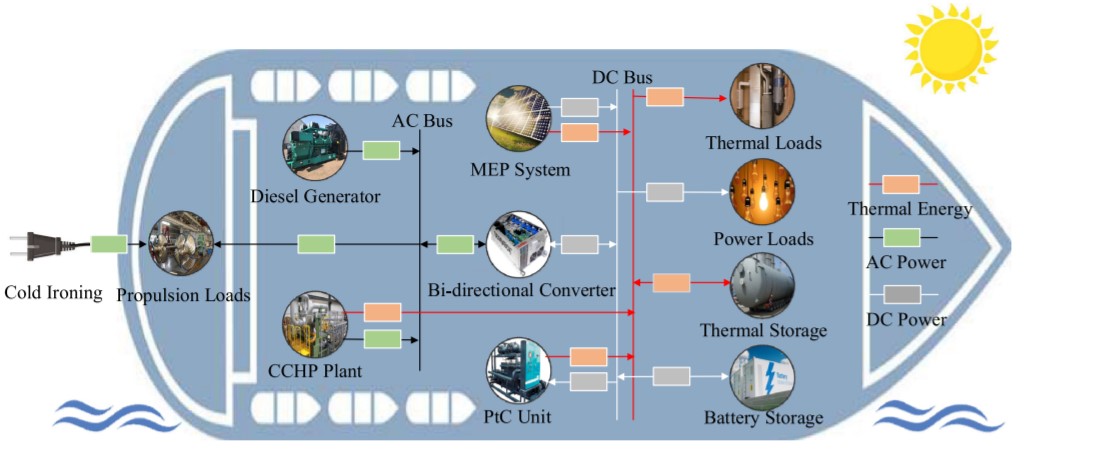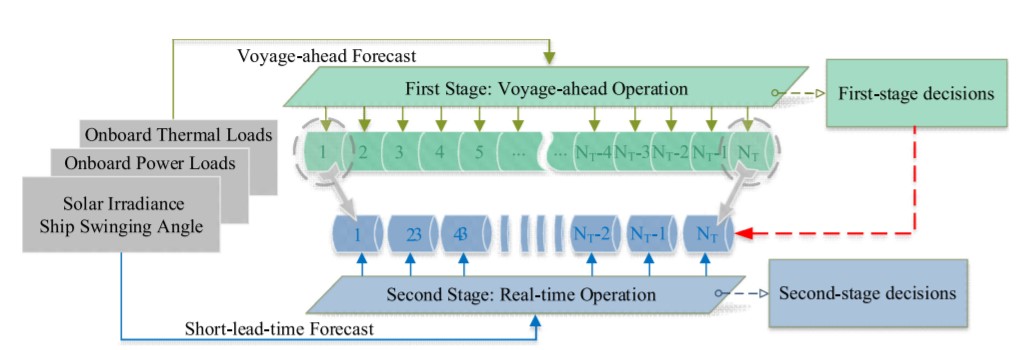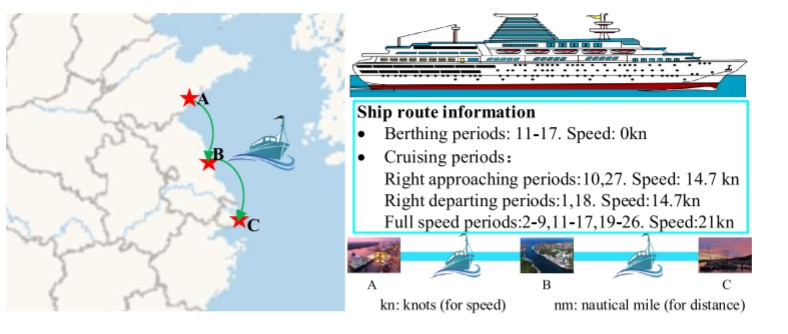Ships have become vital components of the global economy. In the last decade, the industry has undergone a transformation from small boats to large shipping containers and cruise ships. However, the need to innovate and meet consumer demands has led to an increase in gas emissions and fuel consumption. Current solutions to address rising emissions have mostly been geared towards onboard energy systems and electricity usage, but there has been an increased interest for an all-electric, multi-energy shipping technique that can be both economic and environmentally friendly.
It comes as no surprise that ships come with massive uncertainties. Regulations are strict on the water, weather conditions can become extreme and a ship’s movements or “swinging” caused by waves could cause severe damage, making renewable energy techniques, such as multi-energy photovoltaic (MEP) systems highly intermittent.
To meet these challenges, a research team developed an energy-integrated hybrid AC/DC multi-energy ship (MES) microgrid system where power and thermal – heating and cooling – energy flows can be coordinated simultaneously with electricity.
“The purpose of our solution is to coordinate [a] multi-energy dispatch and voyage scheduling [system] for marine ship energy [that can] minimize operating and energy supplying costs and risks,” said Zhengmao Li, who is currently a research fellow with the Stevens Institute of Technology in New Jersey. “[Our goal is to] make the ship’s energy systems immune to diverse uncertainties such as solar irradiation, ship swinging, and onboard multi-energy demands.”

Figure 1: Configuration of the hybrid AC/DC MES microgrid
As outlined in Figure 1, the hybrid AC/DC MES microgrid system is made up of changeable units. It includes an MEP system, combined cooling, heating, and power (CCHP), a conventional diesel generator (DG), power-to-thermal conversion units, and battery and thermal storage. The AC and DC systems are connected by bidirectional converters that make it easy to control the power transferred from the DC grid to the AC one, and vice versa. Together these units make it possible to supply and address marine propulsion and service loads while being energy and cost-efficient.
Additionally, when the ship is berthed or docked, it can receive power support from ports by cold ironing or shore-to-ship power, which is the process of providing a ship with electrical power while its main and auxiliary engines are turned off. The grid-tied microgrid – during berthing – and islanded microgrid – during cruising – methods provide both system energy balance and security.

Figure 2: Two-stage coordination model for the multi-energy cruising ship
During a ship’s voyage, and depending on its speed, power can be converted to kinetic energy, and heat waste from gas turbines can be recycled to produce thermal energy. Additionally, solar energy on the MEP models can be leveraged as an alternative solution and switched out when weather changes pose a problem. To effectively handle and adapt to all these uncertainties, the MES operation incorporates two models, which are illustrated in Figure 2.
The Voyage-ahead operation takes into account a ship’s travel information, cruising route, speed range, and potential uncertainties in the days ahead to formulate the optimal scheduling and energy decisions for future voyages. The second model factors in real-time uncertainties and dispatch decisions for DG energy, cold ironing, AC/DC power exchange, and CCHP units so solutions can be implemented in real-time and complement the first-stage operation.

Figure 3: Voyage information for the MES microgrid
To test the effectiveness of the hybrid AD/DC MES microgrid solution, Zhengmao and his team successfully conducted several case studies in the Shandong and Jiangsu Provinces in Shanghai, China using a passenger ship. Their solution proved to reduce real-time operational costs, demonstrate immunity to various uncertainties, and was able to coordinate multiple energy solutions flexibly. The voyage information is outlined in Figure 3.
While the solution has yet to be rolled out on a massive scale, the team is aiming to pilot their method through a joint partnership in Singapore in the near future. Notably, according to Zhengmao, their methodology can be leveraged to transform other forms of transportation, including trains and aircrafts creating a global system that puts energy optimization first.
For more information on energy management systems, ships, and power grids, visit the IEEE Xplore digital library.




